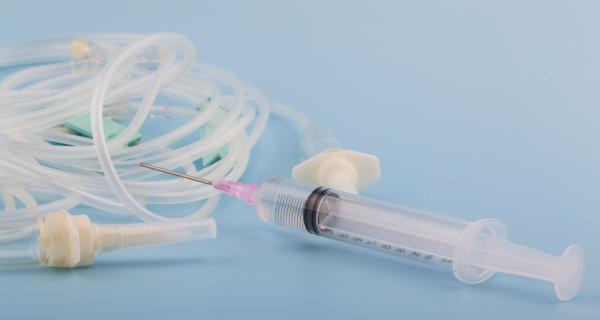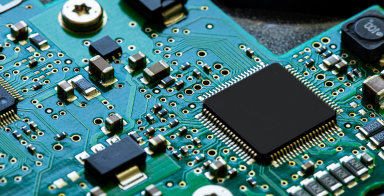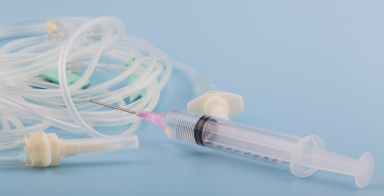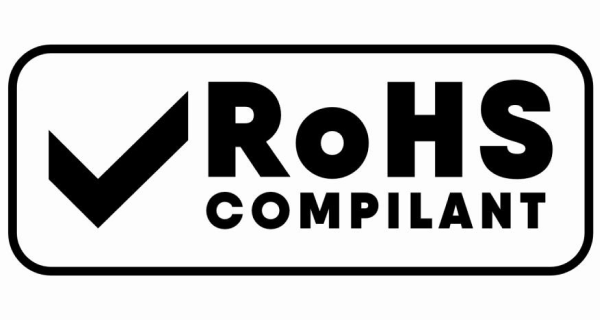Labeling silicone surfaces poses specific challenges due to their low surface energy and high flexibility. Silicone’s resistance to adhesives, combined with its exposure to extreme temperatures and chemical environments, requires advanced labeling solutions. Applications in medical devices, electronics, and consumer products necessitate labels that securely adhere to silicone.
Silicone is a unique material characterized by its low surface energy, extreme flexibility, and resistance to a wide range of environmental factors. These attributes, while making silicone ideal for many applications, also present significant challenges for labeling. Adhesives must be specially formulated to bond with silicone’s non-stick surface, while also enduring exposure to extreme temperatures and harsh chemicals without losing adhesion.
Silicone’s low surface energy repels adhesives, making it difficult to achieve a strong, lasting bond with standard labels.
Silicone’s flexibility requires labels that can stretch and bend without losing adhesion, peeling away, or losing readability.
Siliconized surfaces and coatings create ultra-smooth, non-stick surfaces that further challenge adhesive bonding.
Specialized adhesives are necessary to create a secure bond with silicone’s unique and challenging surface properties.

Silicone’s low surface energy is the core reason for its labeling challenges. Low surface energy means that adhesives have difficulty spreading out and forming a strong bond with the silicone surface. Adhesives rely on surface tension to create a secure grip, but silicone’s surface actively repels them, preventing the adhesive from properly anchoring.
As the silicone bends or stretches, the adhesive is further strained, leading to peeling or detachment. To effectively label silicone, adhesives must be specially engineered to overcome these obstacles, creating a bond strong enough to adhere despite the material’s resistance. Without such advanced formulations, achieving reliable adhesion on silicone surfaces is nearly impossible.
Silicone labeling is important in the medical device, electronics, and aerospace industries. These sectors demand high-performance labels that can adhere to silicone’s low-energy surfaces while withstanding extreme temperatures and chemical exposure. Reliable silicone labeling is crucial for ensuring the durability and safety of critical components.

Silicone is often utilized for products like thermal interface materials, seals, and insulators, where space is limited and conditions are demanding.
Labels on these silicone components must resist the heat generated during device operation and remain adhered in compact, confined spaces.
Moreover, these labels need to survive exposure to cleaning chemicals and fluctuating environmental conditions, ensuring that identification and tracking remain consistent throughout the product’s lifecycle.

Silicone is widely used for products such as catheters, tubing, and implantable devices due to its biocompatibility and flexibility.
Labeling these devices requires adhesives that can withstand sterilization processes, including autoclaving and sterilization.
Additionally, labels must be designed to remain secure and readable, ensuring compliance with stringent industry regulations and safeguarding patient safety.

Silicone is frequently used in automotive components like gaskets, seals, and hoses for its durability and resistance to extreme temperatures.
Labeling these parts is challenging due to the harsh conditions they face, including exposure to engine oils, high heat, and mechanical vibrations.
Automotive labels must adhere securely to the silicone surface and maintain legibility throughout the component’s life, ensuring reliable tracking and identification in demanding environments.

Silicone labeling is governed by FDA 21 CFR Part 175.105, which ensures that adhesives used on silicone products in contact with food or medical devices are safe. RoHS (Restriction of Hazardous Substances) compliance is essential for labels on silicone products, particularly in electronics, to ensure they do not contain hazardous substances like lead or mercury.
REACH (Registration, Evaluation, Authorization, and Restriction of Chemicals) regulations further ensure that chemicals used in adhesives and labeling materials for silicone products are safe for both human health and the environment. Ensuring compliance with these regulations is vital for product safety and performance. Meeting these requirements is essential to maintain safety and compliance.
Silicone’s low surface energy and flexibility demand highly engineered labels with specialized adhesives and face stocks. The correct materials ensure adhesion and durability under temperature extremes and chemical exposure. Proper material selection is vital for labeling silicone surfaces.
We maintain a comprehensive inventory of solvents, acids, bases, and industrial chemicals for material testing.
T-peel, 180-degree peel, and shear tests are crucial for evaluating how well labels stick to metal surfaces.
Our advanced equipment is capable of testing label performance fom as low as -296°C all the way up to 600°C.
We use the Taber abrader to help us determine how well labels materials can withstand wear and tear in demanding environments.

Silicone surfaces require highly specialized labeling materials to achieve secure adhesion despite low surface energy and extreme flexibility. Our engineered solutions utilize advanced adhesives and face stocks to ensure labels stay attached and perform well under demanding conditions.
Ensure our labeling solutions meet your silicone product requirements. Submit your information to qualify our materials for your applications.












© Computype 2024
© Computype 2024
Take advantage of our volume discounts for bulk orders. Reach out to us for a personalized quote tailored to your needs.
"*" indicates required fields